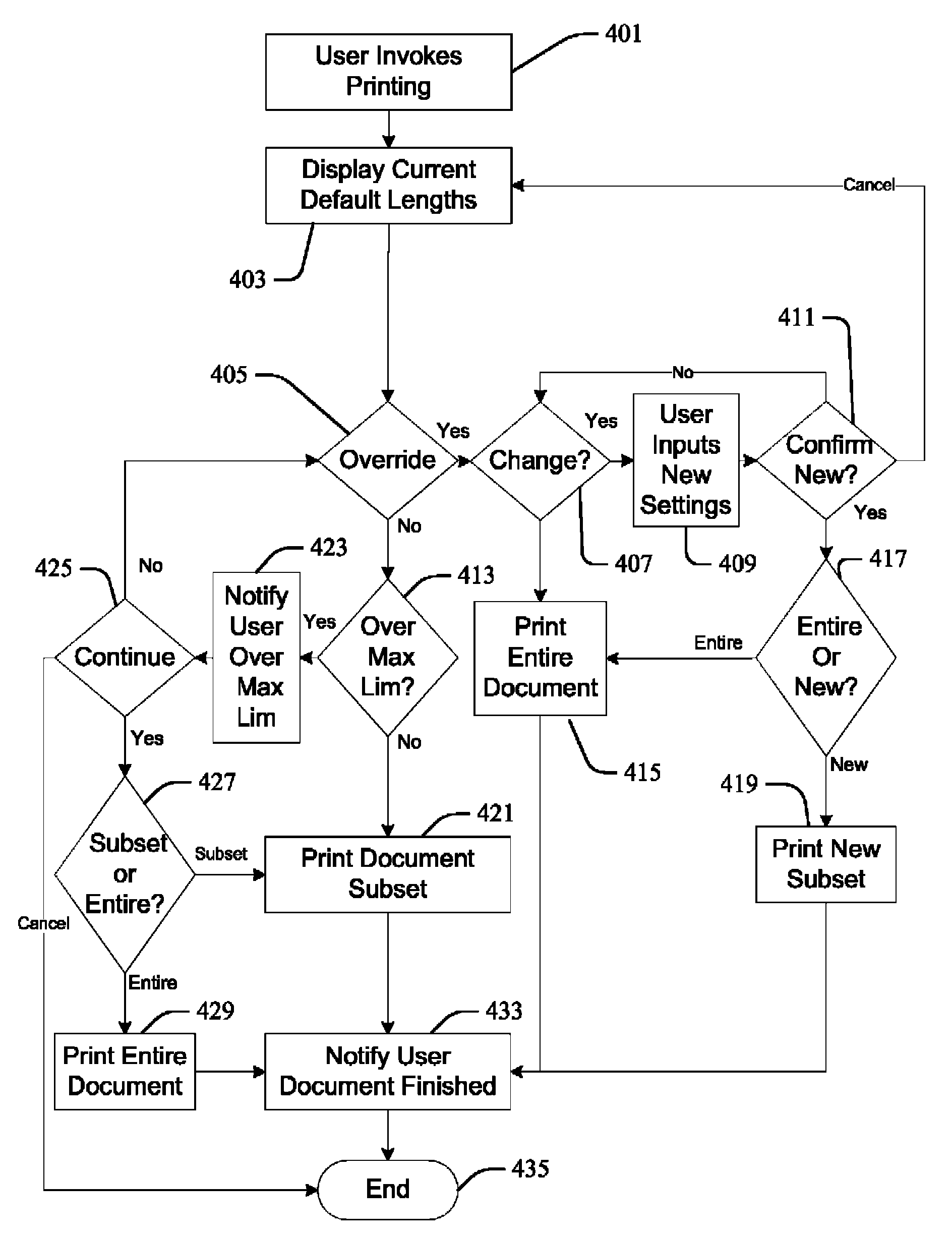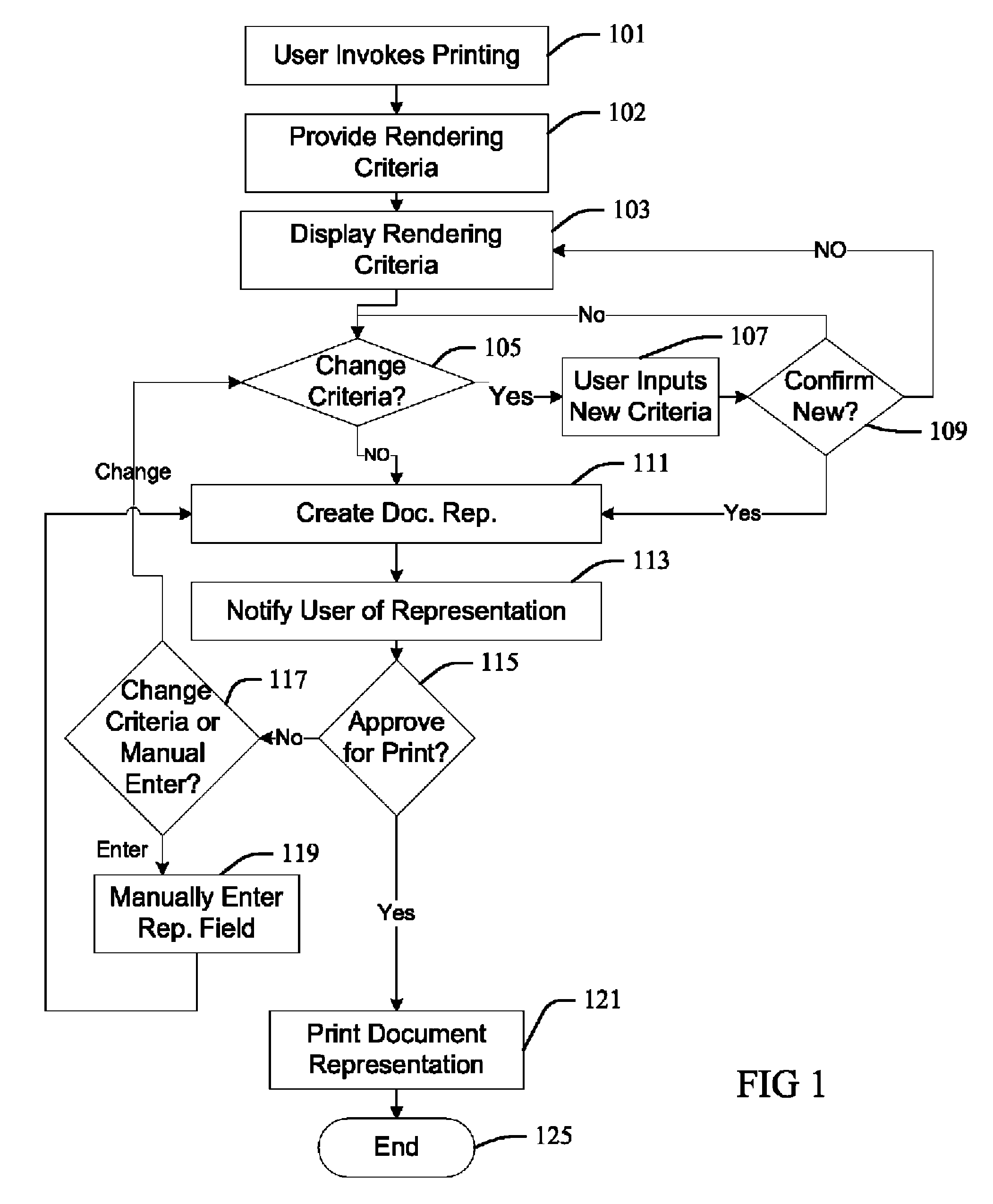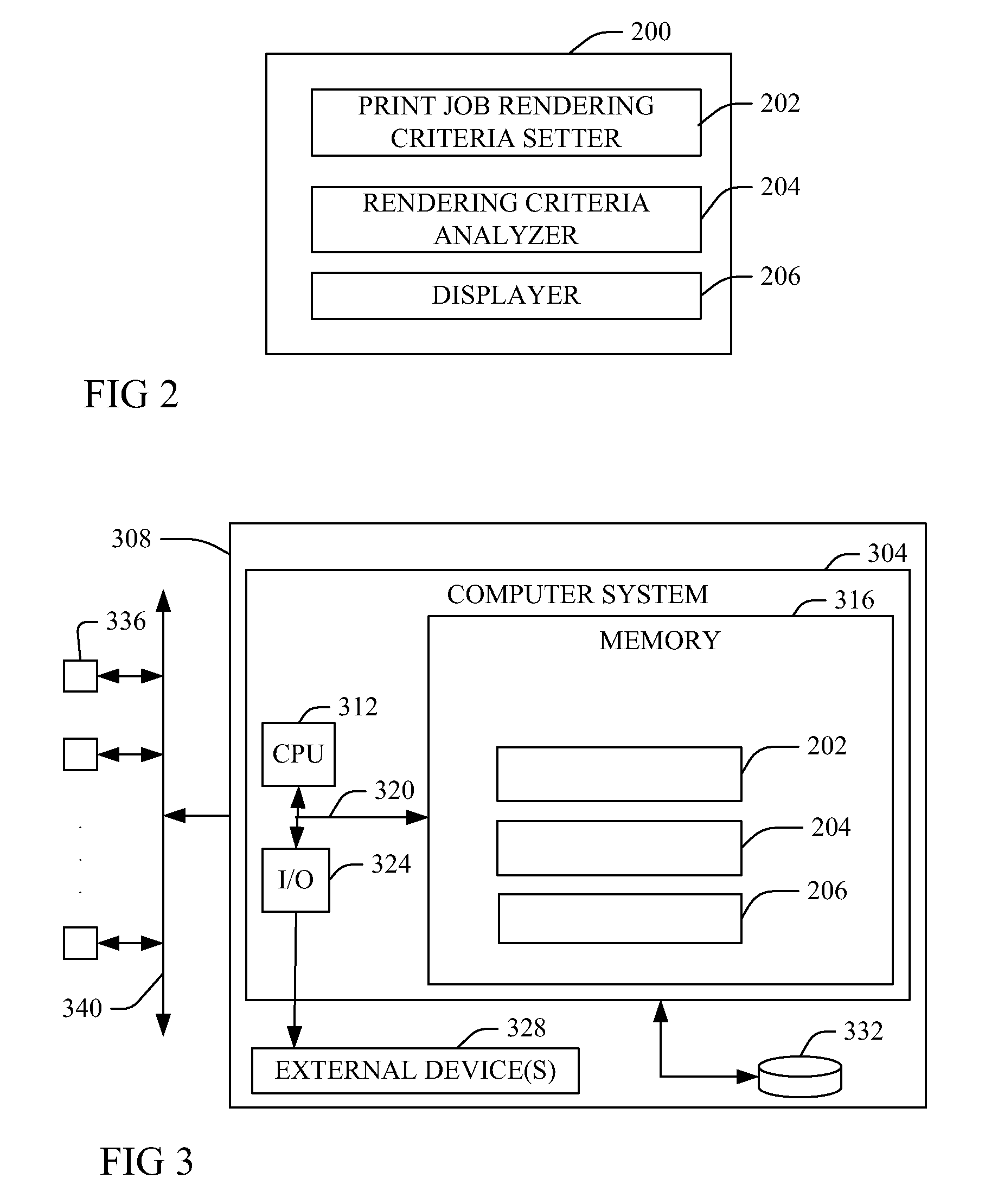Efficient print operations
a printing operation and printing technology, applied in the direction of digital output to print units, electrographic processes, instruments, etc., can solve the problems of not offering ways to reduce the carbon many of these inefficient printers are widely used, and many of them do not offer ways to reduce the use of printers associated with accidental or excessive printing. the effect of reducing the resource footprint of printer operation outpu
- Summary
- Abstract
- Description
- Claims
- Application Information
AI Technical Summary
Benefits of technology
Problems solved by technology
Method used
Image
Examples
Embodiment Construction
[0018]For convenience purposes, the Detailed Description of the Invention has the following sections:
[0019]I. General Description
[0020]II. Computerized Implementation
I. General Description
[0021]Green computing methods may be implemented to perform computing tasks for a smaller energy and resource footprint. Footprint may be understood as a generic term encompassing a wide variety of energy, resource and emissions requirements and costs associated with affecting a process such as a print operation, for example including a power budget, pollution emissions, and paper and ink and other resource use, and other examples will be apparent to one skilled in the art.
[0022]A power budget may consist of the allocation of available electrical power among the various functions that need to be performed. Printers consume a larger quantity of energy while they are being used than when they are suspended or waiting for a print job. Reduced power consumption methods currently include putting a print...
PUM
 Login to View More
Login to View More Abstract
Description
Claims
Application Information
 Login to View More
Login to View More - R&D
- Intellectual Property
- Life Sciences
- Materials
- Tech Scout
- Unparalleled Data Quality
- Higher Quality Content
- 60% Fewer Hallucinations
Browse by: Latest US Patents, China's latest patents, Technical Efficacy Thesaurus, Application Domain, Technology Topic, Popular Technical Reports.
© 2025 PatSnap. All rights reserved.Legal|Privacy policy|Modern Slavery Act Transparency Statement|Sitemap|About US| Contact US: help@patsnap.com



